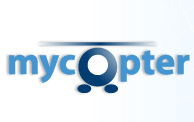EU Research Project
Scientific contact
Max Planck Institute for Biological Cybernetics
 heinrich.buelthoff[at]tuebingen.mpg.de
heinrich.buelthoff[at]tuebingen.mpg.de
Newsletters
 Newsletter #1, September 2011
Newsletter #1, September 2011
 Newsletter #2, March 2012
Newsletter #2, March 2012
 Newsletter #3, November 2012
Newsletter #3, November 2012
 Newsletter #4, August 2013
Newsletter #4, August 2013
 Newsletter #5, August 2014
Newsletter #5, August 2014
 Newsletter #6, March 2015
Newsletter #6, March 2015
Paralell tracking and mapping
This work has been performed at the Autonomous System Lab at the  Eidgenössische Technische Hochschule Zürich and is part of the following publication (also see our
Eidgenössische Technische Hochschule Zürich and is part of the following publication (also see our  publication database):
publication database):
Achtelik M. W., Lynen S., Weiss S., Kneip L., Chli M. and Siegwart R. (2012) Visual-Inertial SLAM for a Small Helicopter in Large Outdoor Environments IEEE/RSJ International Conference on Intelligent Robots and Systems 2012, 1-2.
 Eidgenössische Technische Hochschule Zürich and is part of the following publication (also see our
Eidgenössische Technische Hochschule Zürich and is part of the following publication (also see our  publication database):
publication database):
Achtelik M. W., Lynen S., Weiss S., Kneip L., Chli M. and Siegwart R. (2012) Visual-Inertial SLAM for a Small Helicopter in Large Outdoor Environments IEEE/RSJ International Conference on Intelligent Robots and Systems 2012, 1-2.
Description
Computer vision techniques are commonly used in research for real-time tracking and navigation. High-performing stereo-based systems have demonstrated successful operation on ground vehicles. However, stereo setups are unsuitable for navigation with small aerial vehicles as the stereo image essentially reduces to a monocular image when the scene is viewed from a large distance or from close by (e.g., during landing). Hence we focus our study around monocular based methodologies.
We have implemented a high-performance parallel tracking and mapping system to achieve monocular self-localisation and mapping on-board a small aerial vehicle. Due to the long trajectories that are flown, the high dynamics of the motion of the vehicle, and dynamic objects in the scene, we use additional sensors including an Inertial Measurement Unit featuring accelerometers and gyroscopes, a magnetometer, air-pressure data, and GPS information where available.
The framework that we have developed is publically available at



